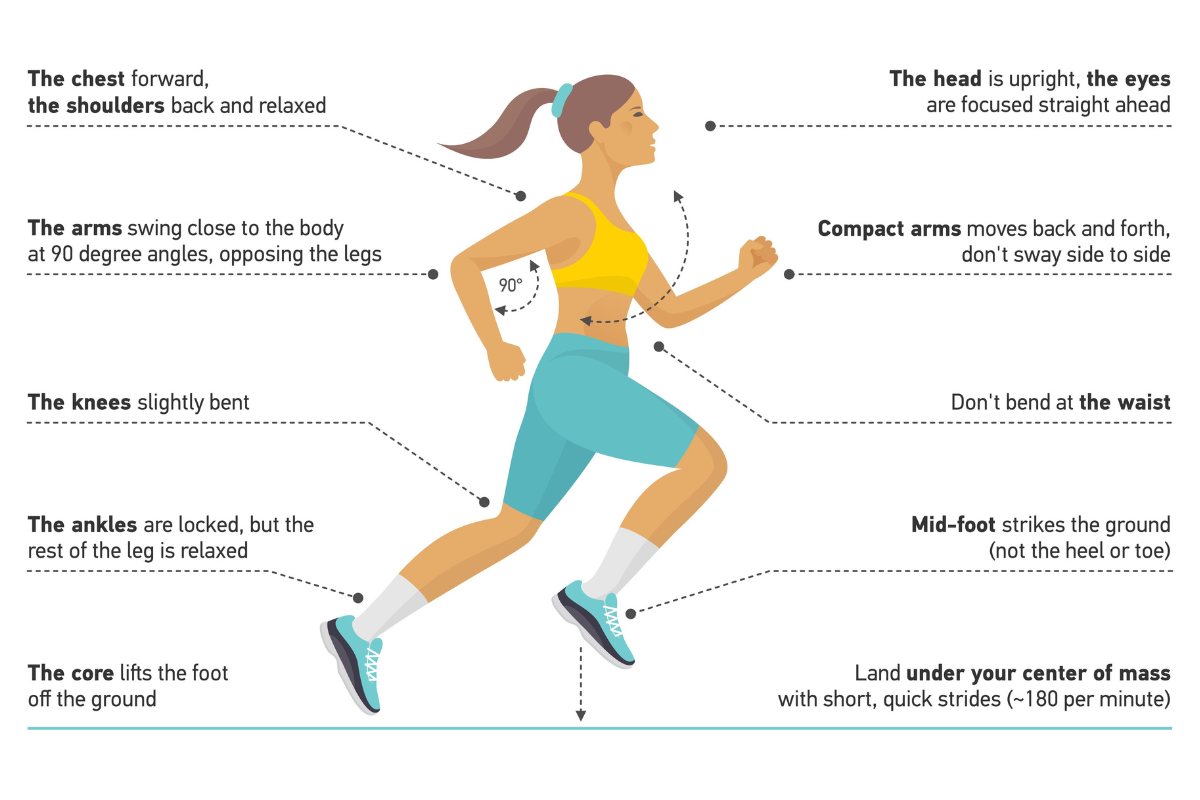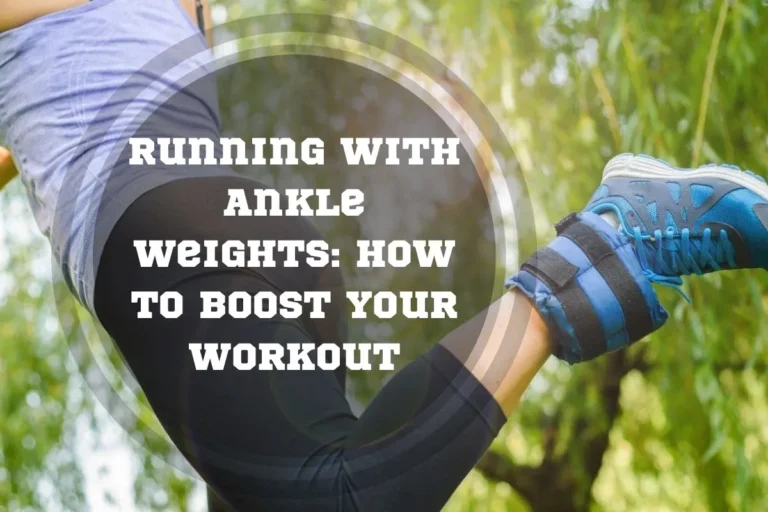How to Overcome Bad Running Form? 7 Tips How to Run Better
Although running is a physical activity, it’s also a powerful unifier of the body, mind, and spirit. Feeling your heartbeats align with your footsteps is a reminder of the harmony between your inner being and the journey you’re headed upon. The only thing that interferes between these two concepts is a bad running form. Many runners are self-taught and don’t acknowledge the difference between good running form vs bad one.
Not everyone engages in running the same way. We all have our way of running, which feels most natural. Some of us like to indulge in long distance running form. Others prefer running in intervals. No matter the preference, a non-ideal running form is something that we may be dealing with. So, how to fix running form? Here, we will discuss overcoming poor running form while maximizing your long-term effects as a runner.
How to improve your bad running form?
You can fix your improper running form by becoming mindful of your runs and controlling your movements. Fixing these things will improve your bad running posture. Keeping your head over your shoulders, your shoulders over the hips, and placing the hips over mid-foot will improve your posture.
What is Running Form? 7 Types of running forms
Running form is the specific way your body moves and positions itself while you’re running. It encompasses the runner’s mechanics, such as arm movement, foot strike pattern, and posture. All of these components must be aligned to fix your improper running technique. To improve your running form, you need to be informed about the types of running forms. So let’s go ahead and discuss each of them.

1. Base Run
A base run involves running at a runner’s comfortable pace for distances that are relatively short to moderate. The goal of this running form is not to push or challenge yourself but to try and establish a routine that helps improve endurance. Base runs are meant to be frequent while stimulating improvements in aerobic capacity, running economy, and the extent of your training mileage.
2. Sprint Runs
Sprint runs are effective in improving bad sprinting form. This running form involves running at a high intensity for a limited period. For example, a sprint run is when you run for 30 seconds as fast as possible and then do a 5 min recovery time of walking or slow jogging. Also, the running pace can be increased over a certain distance.
3. Interval Runs
Interval runs are crucial when fixing your improper running form. This running form includes clearly defined high-intensity and short-slow jogging intervals. Both high-intensity and slow intervals last 10-60 seconds and are known as “duty cycles” in coaches’ terms.
This running form will help you improve your bad sprinting form and bring beneficial stimuli in speed and strength endurance areas. There are two types of interval runs, which are:
- Extensive interval training allows the high-intensity sections to be repeated frequently and interrupted by short breaks.
- Intensive interval training has very high-intensity sections (level 4, even 5) that need to be interrupted by correspondingly longer breaks.
Interval runs also allow you to optimize your training according to your heart rate. For example, run a high-intensity interval of 100-200 meters and then do a slow jog or fast walk until your heart rate reaches a certain level (e.g.130 or 120).
4. Tempo Run
Tempo runs are more extended than interval distances but shorter than long distance runs. These running forms are moderate to hard-intensity runs, between 3 and 5 miles or between 20 and 40 minutes in duration.

5. Fartlek Run
Fartlek run or speed variation is a version of interval training that involves a long distance running form. This running form involves transitioning between various running distances and durations.
You need to adapt your running to the terrain and run at different speeds. Fartlek runs involve picking a mark/point in the landscape and running to this point quickly. This running form will turn your training into a fun game and do miracles with improving your bad running form.
If you believe you can’t maintain a consistently fast pace to your destination, don’t hesitate to mix in occasional slower running intervals for a brief period. This way, you can make Fartlek run a good combination of high-intensity and long distance running.

Pro Tip:
The core principle behind Fartlek training is to allow the body to adapt to various speeds while increasing its overall fitness. Both high-intensity and low-intensity sessions can be utilized in Fartleks for an extensive workout routine.
6. Hill Runs
Hill runs include short, repeated segments of uphill running. They are a particular version of interval training that enormously benefits the circulatory system and muscular endurance. You can adapt the intensity of this running form without compromising its effectiveness, which applies to the two ways of doing hill runs:
- Run up a short and easy slope and do a slow jog back to your starting point
- Merch several hill runs on a long slope with short walking breaks
Running uphill should be approached gradually. Start with less time and a smaller incline, gradually increasing the intensity over weeks.
Adding uphill sprints like this can be effective: 2 sets of 3 repetitions of 15 seconds each, with 3-4-5 minutes of rest in between.
7. Long Run
Long distance running form is a run that needs to last as long as you can. Its function is to increase raw endurance. This running form can even last until it leaves the runner severely fatigued. Long runs will get you to learn the difference between the good vs bad running form, as much as they will fix your poor running technique. You can make long runs fun by implementing various speeds or acceleration at the end.
Calculator Of Running Time: Improve Your Running Performance.
If you are engaging in long-distance runs, this calculator will help you calculate the time to enhance your performance. The running time calculator uses a formula that takes into account the distance, gender, training level, and age of the runner. So, by using this calculator, you can estimate the approximate time needed to cover the desired distances and improve your results.
Running Time Calculator
Result:
Good Running Form vs. Bad Running Form: The Main Differences
There are a lot of differences between good running form vs bad one. The main difference between these two is how your body behaves while running, which impacts performance, efficiency, and risk of injury. If you’re dealing with poor running form, most certainly, you’re also dealing with the consequences of it.
Moreover, you might experience discomfort in your shoulders or chest, possibly stemming from the habit of hunching your shoulders and jutting your chin while running.
In contrast, proper running form necessitates upholding an erect posture, positioning your head correctly, opting for a midfoot strike, and ensuring relaxed hands and fists.
Consistently prioritizing the enhancement of your running technique will not only safeguard you from injuries but also elevate your overall running enjoyment.
| Good Running Form | Bad Running Form |
|---|---|
| Injury-free | Neck pain while running |
| Improved performance | Knee pain |
| More efficiency | Hip pain |
| Better health | Forefoot pain |
Why is Good Running Form Important?
A good running form has an essential value for runners. Having a good running form makes you a more efficient runner and allows you to direct all your power toward running. In addition, you’ll be less stressed and feel more comfortable. Most importantly, proper running form greatly lowers the chance of getting hurt by reducing pressure on your bones, ankles, joints and muscles.
By transitioning to a better form, you’ll experience an elevated sense of joy while running, commonly known as the “runner’s high”. This emotional uplift contributes to your overall mental well-being. Also, your good running form is important because it’s more effective. The rightful body movement activates the right muscles at the right time. This way, you can be sure that your muscles are working synergistically and making sure you get the most out of running.

How To Tell If My Running Form Is Bad?
If you’re unsure about whether your running form needs improvement, let’s delve into the topic. There are several ways to identify if you have poor running form, and the following issues are the most commonly experienced:
- Fatigued quads or hips involve certain muscles working harder than they should to move your leg forward.
- Shoulder pain can indicate tension in the upper body.
- Neck pain means you’re poking your head forward while running.
- Knee or hip pain indicates muscle imbalance leading to improper movement.
- The sensation of leaning backward occurs when your foot lands ahead of your hip.
- Restricted breathing during short runs while running
- Recurring soreness in specific muscles is a sign of poor running technique, showing muscle imbalance.
- Side-to-side movement on your head
- Pain in the forefoot indicates you’re not landing properly, which is a midfoot strike.
Subscribe to Our Running Newsletter!
Get free running tips from renowned professional athletes and discounts from top-notch brands.
6 Tips How to Fix Running Form
Having explored the significance of proper running form and recognizing signs of poor form, it’s now time to address the solution – how to fix bad running form. Although it can sometimes be challenging to replace old habits with new ones, the effort is undoubtedly worthwhile. Now let’s jump on the discussion and see the change you need to make in order to improve your running form.

1. Eyes Up And Chin Down
Never stare at your feet while running. Always get your head right and raise your chin when tired. Remember that not having your head straight and strong above your neck adds about 11 pounds of strain to your neck joints and muscles.
2. Keep Hands At Your Waist
Try keeping your hands at waist level, right next to your hip, and bend them at a 90-degree angle. Make sure to keep your arms relaxed—don’t grip them into tight fists. Tension can easily creep up to your shoulders and neck when you’re not relaxed.
3. Shoulders Back And Down
Relax your shoulders as much as you can while running because hunching puts extra pressure on the respiratory system and does not allow enough oxygen to get in.
4. Remember Midfoot Strike
The correct running form means you must land midfoot– a midfoot strike. Runners landing on their toes or heels tend to increase the risk of injury.
5. Mind Your Posture
Keep your posture straight and strong. Make sure you’re not hunching but facing forward. Try to maintain a neutral pelvis and shoulders under your ears. Check your posture regularly, especially when feeling tired.
6. Keep Arms By Your Sides
Don’t swing your arms from side to side. When they cross your chest, you’re not gonna breathe efficiently. And inefficient breathing can lead to health issues, such as abdominal cramps. Always tend to increase the distance between your forearm and upper arm.
Frequently Asked Questions About Bad Running Form
Can Bad Running Form Cause Injury?
Yes, bad running can lead to various injuries. Your improper posture, body movements, and muscle imbalance while running can unnecessarily stress your muscles, ankles, joints, and bones, increasing the risk of injury.
How Should My Feet Hit The Ground When Running?
You should be aiming for a midfoot strike, meaning your feet should land with your midfoot, making the first contact on the ground. This way, you will have better shock absorption and smoother stride.
Summing Up Everything About Bad Running Form
We can conclude that a substandard running form impacts your health and lifestyle. Refining your running form is crucial for optimal running performance and injury prevention. So, embrace these insights and transform your experience. What do you think of our improving tips and strategies? If they are helpful, share your experience with us in the comments!
Also read:
- Best Running Insole
- Hoka or Brooks for Running
- Is Pickle Juice Good for Runners
- What Is Considered Long Distance Running
- Best Running Tank Tops For Women’s and Men
- 5k Training Plan Advanced
- Hip Stretches For Runners
- Creatine for Runners
- Neutral vs Stability Running Shoes
References:
- Effects of Running-Specific Strength Training, Endurance Training, and Concurrent Training on Recreational Endurance Athletes’ Performance and Selected Anthropometric Parameters // PubMed: https://pubmed.ncbi.nlm.nih.gov/36078489/
- How the human body reacts while running // The Official Home Page of the AFMS: https://www.airforcemedicine.af.mil/News/Display/Article/1204302/how-the-human-body-reacts-while-running/
- The Truth Behind ‘Runner’s High’ and Other Mental Benefits of Running // Johns Hopkins Medicine: https://www.hopkinsmedicine.org/health/wellness-and-prevention/the-truth-behind-runners-high-and-other-mental-benefits-of-running
- Injuries in Runners; A Systematic Review on Risk Factors and Sex Differences // PMC: https://www.ncbi.nlm.nih.gov/pmc/articles/PMC4338213/
If you have any questions or suggestions, you can contact us via email – [email protected]






